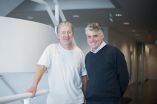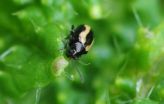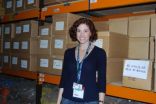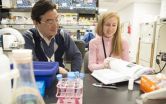(Press-News.org) Melbourne researchers have overturned a 40-year-old theory on when and how cells divide, showing that 'parent' cells program a cell division time for their offspring that is different from their own.
Scientists from the Walter and Eliza Hall Institute have shown that both phases of the cell cycle contribute to the overall change in division time rather than one staying fixed in duration as previously thought. They have developed these findings into a new model that helps scientists predict how a population of cells has divided.
Their research could impact our understanding of cell replication, such as occurs during the immune response to infection or in cancer development and progression. The study was published in the journal Proceedings of the National Academy of Sciences.
Institute scientists Professor Phil Hodgkin, Dr Mark Dowling, Dr John Markham, Dr Andrey Kan and colleagues made the discovery while studying how immune cells called B and T cells divided over time. Using time-lapse microscopy, the research group followed individual cells, observing each phase of the cell cycle as the cell divided into two new 'daughter' cells and recording how long each phase took.
The cell cycle can be broken into two phases. In the first phase, cells grow in size and make the proteins required to copy their DNA. In the second stage, the DNA is copied and final preparations are made to split the cell in half in a final stage known as mitosis. Since 1973, scientists have predicted cell division using a model that captures the overall length of the cell cycle, but does not explain how long each phase may last.
Dr Markham, who completed the research while at National Information and Communication Technologies Australia (NICTA), said the study found the time taken for each stage of the cell division cycle varied from cell to cell. "The old model of cell cycle times didn't fit our observations, so we developed a new model that more accurately predicts how a population of cells has divided," Dr Markham said.
"Imagine the cell cycle as an elastic band, representing the time a cell takes to divide. Each phase of the cell cycle is in a fixed place on the elastic band, but the band itself can stretch or shrink, effectively elongating or shortening the time taken for each phase of the cycle."
Professor Hodgkin said the study not only provided a better model for how cells divided, it also provided clues as to why there was variability in cell cycle times across a group of the same cell type. "The old model assumed the second phase of cell division took a fixed amount of time, with all the variability coming from the first phase," he said. "It used a concept called 'transition probability' to predict how a population of cells may behave, but it couldn't be applied individual cells.
"Our study revealed that when a cell divides, its two 'daughter' cells share the same division time as each other, but this time is different from their 'parent'. From this we can conclude that cell division times are programmed by the parent cell when preparing to divide, but that time is not carried across generations. While we don't yet understand exactly how it is set, this internal timing mechanism has replaced the external 'transition probability' used in the old model."
Professor Hodgkin said although the study provided a better understanding of fundamental science, it would also have practical applications, for example in investigating how immune cells responded to infections. "Our model will allow researchers to take fewer, simpler measurements to complete the picture of how B cells and T cells have divided," Professor Hodgkin said. "However more work is still needed to determine whether these mechanisms are the same in other types of cells in the body, such as cancer cells."
INFORMATION:
The research was funded by the Australian National Health and Medical Research Council, Australian Research Council and the Victorian Government.
'Parent' cells reset the cell division clock
2014-05-08
ELSE PRESS RELEASES FROM THIS DATE:
Low-carbohydrate diet reduced inflammation
2014-05-08
A low-carbohydrate diet, but not a low-fat diet, reduces inflammation in patients with type 2 diabetes, according to research at Linköping University in Sweden.
It is known that patients with type 2 diabetes have higher levels of inflammation than those who do not have the disease, and it is believed that this may contribute to a higher risk of cardiovascular disease and other complications. In a clinical trial at Linköping University a low-carbohydrate diet was compared with a traditional low-fat diet in 61 patients with type 2 diabetes. Only patients in the low-carbohydrate ...
Public perceive alcohol adverts breach regulatory code, research finds
2014-05-08
A majority of the UK general public perceive alcohol adverts to breach the Advertising Standards Authority's Broadcast Committee of Advertising Practice (BCAP) Code suggesting that the current regulatory system for UK television is inadequate, research from The University of Manchester shows.
Researchers surveyed 373 adults, aged 18-74 years, showing them one of seven adverts that had been broadcast in the previous month on leading commercial television channels.
Overall 75 per cent of the participants rated the adverts as breaching at least one rule from the BCAP Code ...
Beetles that taste like mustard
2014-05-08
Almost all herbivorous insects are specialized to feed on specific host plants and have adapted to their chemical defenses. Flea beetles are important pests of cabbage and other cruciferous plants, such as mustard, horseradish and rapeseed. These plants use a sophisticated defense system, known as the mustard oil bomb, to get rid of their enemies : If plant tissues are wounded, glucosinolates and an enzyme known as myrosinase come into contact, and, as a result, toxic metabolites are formed which deter most insects. This defensive mechanism, however, has no negative effect ...
Pesticides: Research provides new insights into their effects on shrimps and snails
2014-05-08
Ground breaking research by an international team of scientists has resulted in greater understanding of the effects of pesticides on aquatic invertebrates such as shrimps and snails.
Research published in the journal Environmental Science & Technology by a team of scientists from the UK, Switzerland and Finland provides an important new approach for systematically measuring and modelling the sensitivity of aquatic invertebrates to various pesticides.
Aquatic invertebrate species are abundant in European freshwaters and play an important role in the decomposition of organic ...
Luminescent nanocrystal tags enable rapid detection of multiple pathogens in a single test
2014-05-08
WEST LAFAYETTE, Ind. — A research team using tunable luminescent nanocrystals as tags to advance medical and security imaging have successfully applied them to high-speed scanning technology and detected multiple viruses within minutes.
The research, led by Macquarie University in Sydney, Australia and Purdue University, builds on the team's earlier success in developing a way to control the length of time light from a luminescent nanocrystal lingers, which introduced the dimension of time in addition to color and brightness in optical detection technology.
Detection ...
Cedars-Sinai study: Common drug restores blood flow in deadly form of muscular dystrophy
2014-05-08
LOS ANGELES (May 7, 2014) – Cedars-Sinai Heart Institute researchers have found that a commonly prescribed drug restores blood flow to oxygen-starved muscles of boys with Duchenne muscular dystrophy, a genetic muscle-wasting disease that rarely is seen in girls but affects one in 3,500 male babies, profoundly shortening life expectancy. It is the most common fatal disease that affects children.
Muscle weakness begins in early childhood, often causing deformity of the arms, legs and spine. Heart and respiratory muscles often begin to fail before children reach early teen ...
New study sheds light on survivors of the Black Death
2014-05-08
A new study suggests that people who survived the medieval mass-killing plague known as the Black Death lived significantly longer and were healthier than people who lived before the epidemic struck in 1347.
Caused by the bacteria Yersinia pestis, the Black Death wiped out 30 percent of Europeans and nearly half of Londoners during its initial four-year wave from 1347 – 1351.
Released Wednesday (May 7) in the journal PLOS ONE, the study by University of South Carolina anthropologist Sharon DeWitte provides the first look at how the plague, called bubonic plague today, ...
New care approach eases depression among women
2014-05-08
Women who received collaborative care for depression at an obstetrics and gynecology clinic showed fewer symptoms after treatment than women receiving usual depression care in the same setting, recent University of Washington research found.
The collaborative approach comprises counseling and greater patient engagement than is typical of mental health care at specialty clinics. It involves psychiatrists, clinicians, specialists and depression care managers. The team meets weekly to review patient progress and provide treatment recommendations. The care manager follows ...
First-ever study describes deep-sea animal communities around a sunken shipping container
2014-05-08
MOSS LANDING, CA — Thousands of shipping containers are lost from cargo vessels each year. Many of these containers eventually sink to the deep seafloor. In 2004, scientists at the Monterey Bay Aquarium Research Institute (MBARI) discovered a lost shipping container almost 1,300 meters (4,200 feet) below the surface of the Monterey Bay National Marine Sanctuary. In the first-ever survey of its kind, researchers from MBARI and the sanctuary recently described how deep-sea animal communities on and around the container differed from those in surrounding areas.
In February ...
Mouse study offers new clues to cognitive decline
2014-05-08
New research suggests that certain types of brain cells may be "picky eaters," seeming to prefer one specific energy source over others. The finding has implications for understanding the cognitive decline seen in aging and degenerative diseases such as Alzheimer's and multiple sclerosis.
Studying mice, investigators from Washington University School of Medicine in St. Louis showed that a specific energy source called NAD is important in cells responsible for maintaining the overall structure of the brain and for performing complex cognitive functions. NAD (nicotinamide ...




